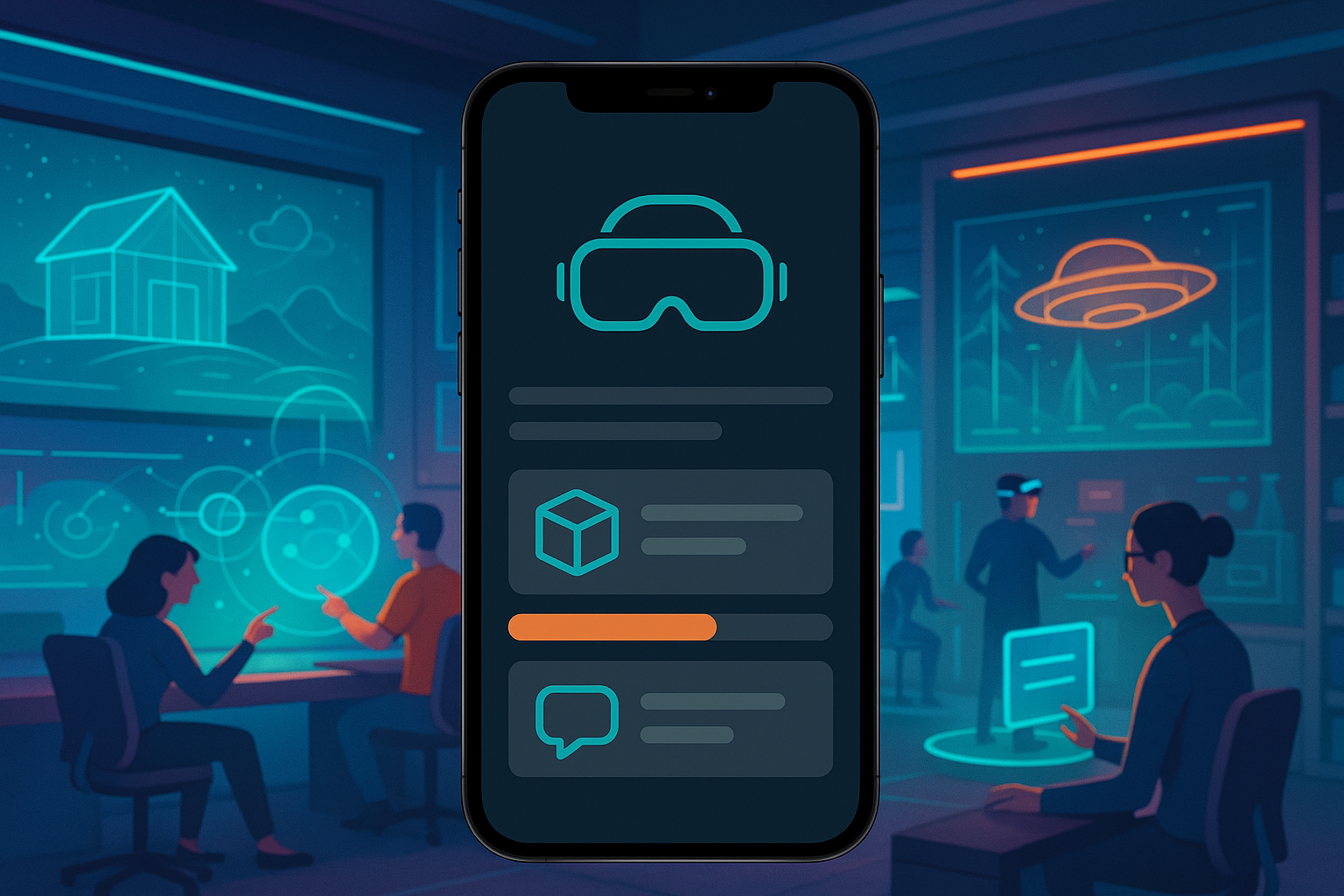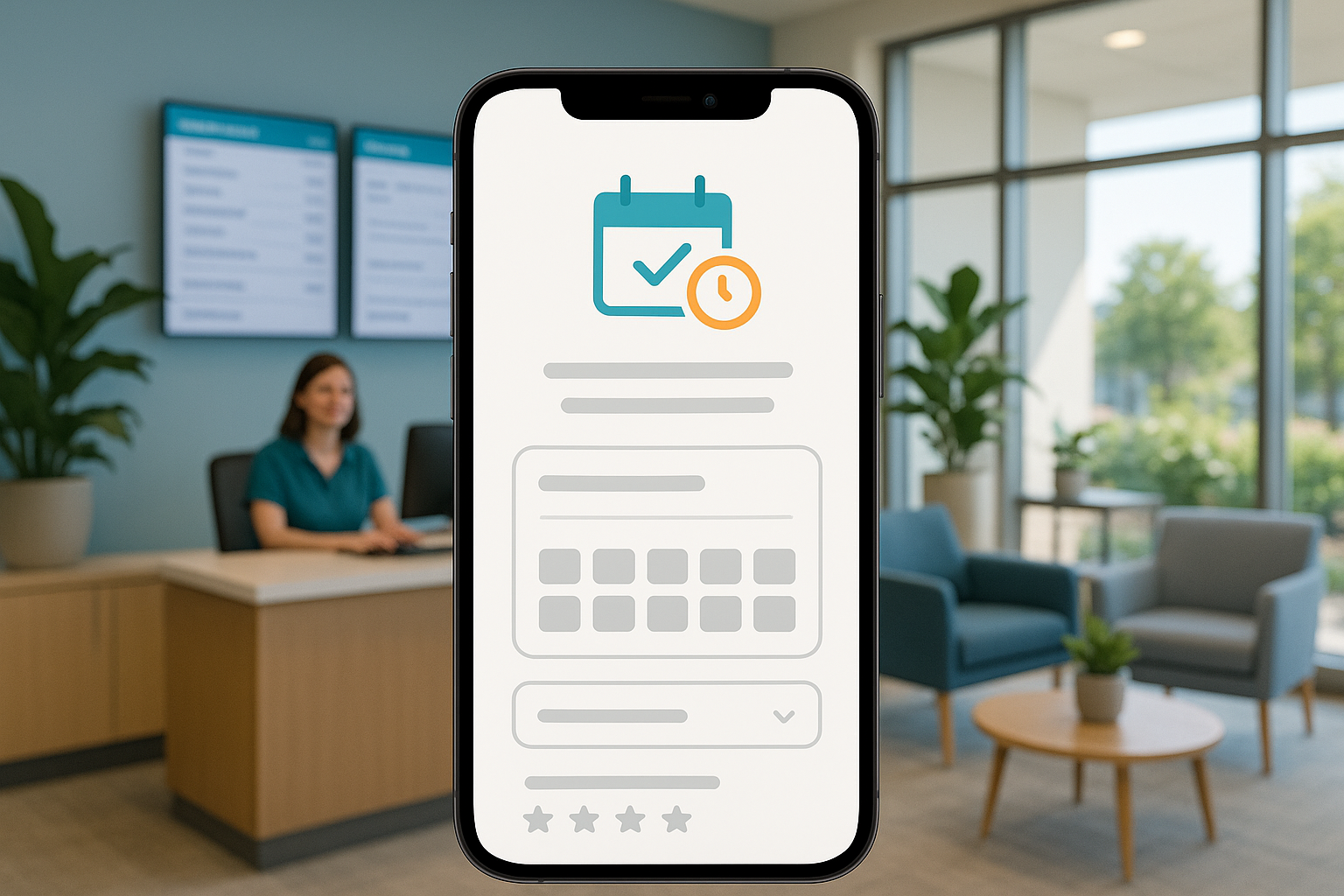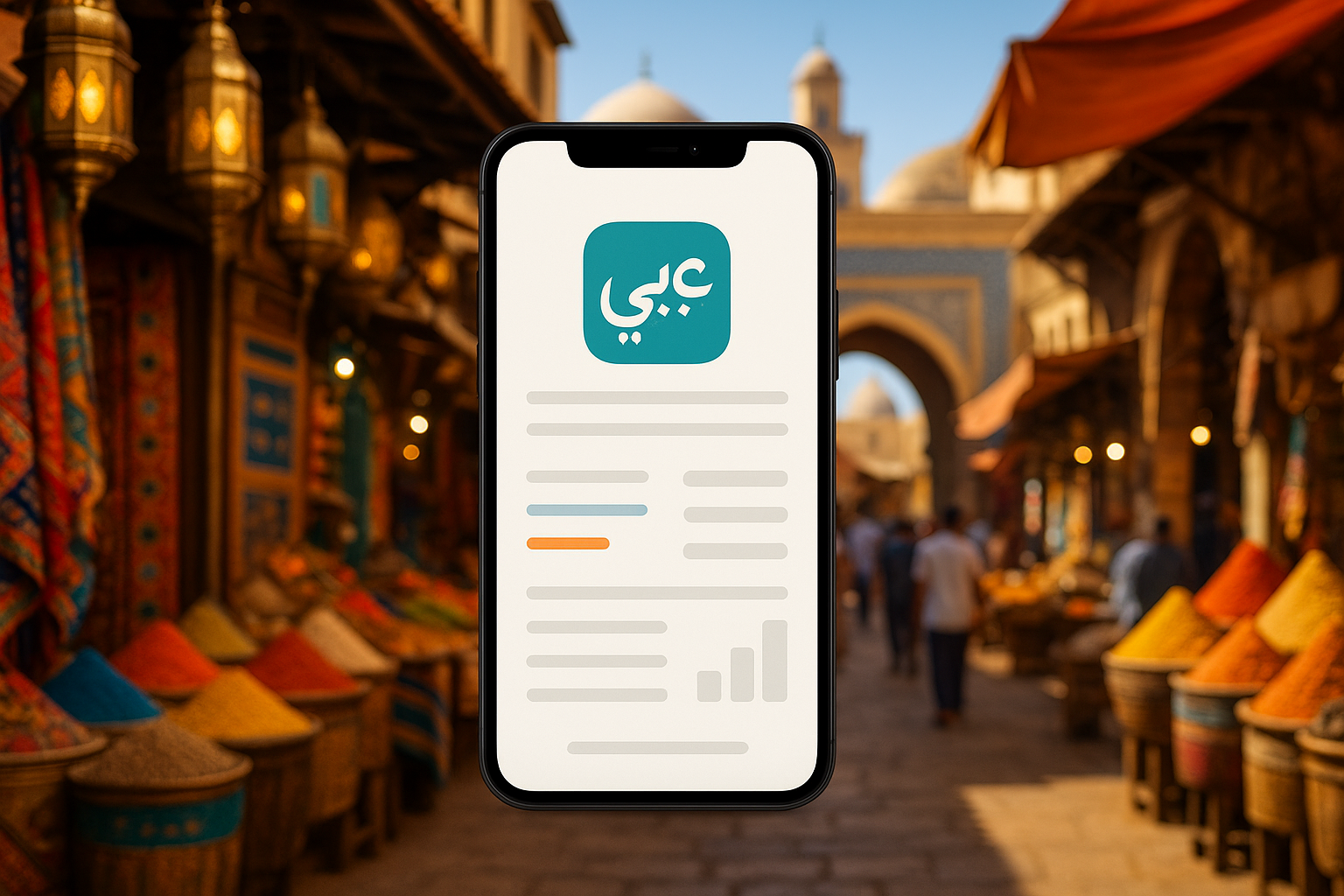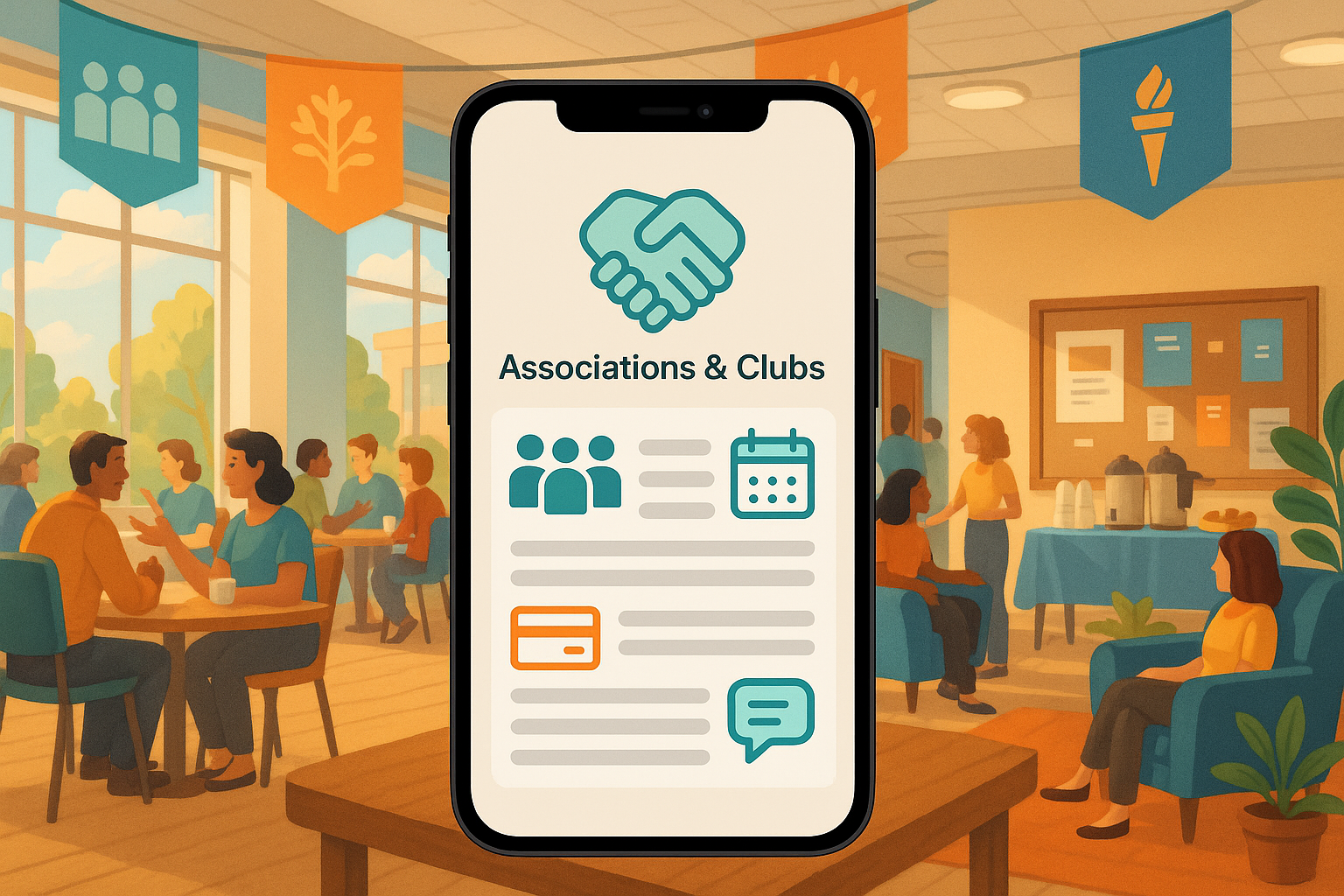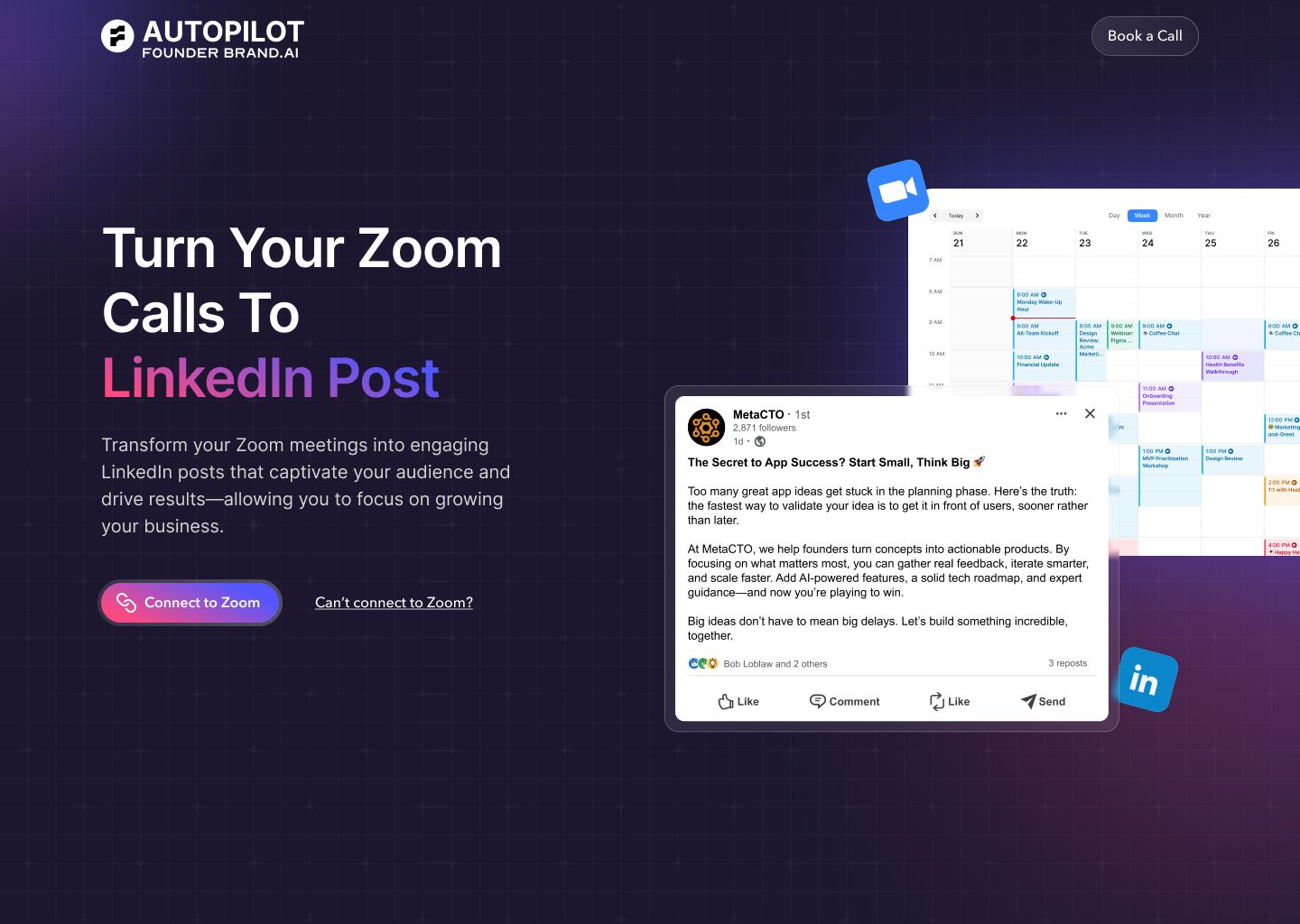Introduction
Augmented and Virtual Reality are no longer the stuff of science fiction; they are powerful technologies actively reshaping industries and user experiences. From allowing customers to visualize furniture in their homes to training surgeons in risk-free environments, AR and VR applications offer unprecedented levels of engagement and utility. However, the path from a brilliant immersive idea to a functional, market-ready app is fraught with unique obstacles. The complexity of the technology, the scarcity of specialized talent, and the significant financial investment required can make in-house development an overwhelming challenge for many businesses.
This guide is designed to demystify the process of AR & VR app development. We will delve into the fundamental definitions of these technologies, explore the reasons why building them in-house is so difficult, and showcase the diverse range of applications transforming industries today. We will also provide a transparent breakdown of development costs and introduce you to the leading firms that can turn your vision into a reality.
As a top US AI-powered mobile app development firm with over 20 years of experience, we at MetaCTO have successfully guided over 120 projects from concept to launch. We specialize in integrating sophisticated AR and VR functionalities into mobile apps, helping businesses leverage these immersive technologies to gain a competitive edge. This article will equip you with the knowledge needed to make informed decisions, whether you’re building a new app from scratch or looking to enhance an existing product with the magic of AR or VR.
What are AR & VR Apps?
While often mentioned in the same breath, Augmented Reality (AR) and Virtual Reality (VR) are distinct technologies that offer fundamentally different experiences. Understanding their differences is the first step in determining which technology is the right fit for your business goals.
Augmented Reality (AR)
Augmented Reality is a groundbreaking technology that does not replace the user’s environment but rather enhances it by seamlessly overlaying digital content into the real world. Through the camera of a mobile device or a pair of smart glasses, AR allows users to interact with virtual objects, characters, and information as if they were part of their physical surroundings. With AR, everyday objects can become portals to endless possibilities.
Imagine pointing your phone at a blank wall and seeing a photorealistic, true-to-scale 3D model of a new sofa, allowing you to check its fit and style before you buy. This is the power of AR. It can make dinosaurs roam your living room, let you try on virtual clothes without leaving your home, or even function as a virtual time machine to witness historical events. By adding a touch of magic to our daily lives, AR is fundamentally transforming how we interact with the world.
Virtual Reality (VR)
In contrast, Virtual Reality transports users out of their physical surroundings and into completely artificial, specially designed digital environments. By wearing a VR headset or goggles, users are fully immersed in these virtual worlds. This technology provides a powerful experience that engages the senses of sight, sound, and sometimes even touch, allowing users to interact with virtual objects as if they were physically present.
VR offers endless possibilities for exploring and experiencing new realities. It can place a medical student in a virtual operating room to practice complex procedures, put a soldier into a realistic battlefield simulation for tactical training, or transport a theme park visitor to a fantastical world beyond the reach of traditional rides. Gaming remains a dominant application, but as we will see, many industries are already benefiting from the profound power of VR’s immersive capabilities.
Reasons It Is Difficult to Develop an AR & VR App In-House
The immense potential of AR and VR is clear, but harnessing it is a significant technical undertaking. Many companies underestimate the hurdles involved in building these applications internally. The primary challenges boil down to two critical resources: talent and money.
The Challenge of Finding Skilled Talent
Finding skilled AR and VR talent remains a major challenge for many companies, even established mobile app development firms in the USA. This is not a standard software development role. Creating immersive experiences requires a unique and highly specialized skill set that sits at the intersection of 3D modeling, game engine expertise (like Unity or Unreal Engine), computer vision programming, and advanced UI/UX design for spatial environments.
An effective AR/VR developer must understand how to optimize complex 3D assets for real-time performance on mobile hardware, implement stable tracking and recognition, and design user interactions that feel intuitive in a three-dimensional space. This talent pool is small and in high demand, making it difficult and time-consuming to recruit a single qualified individual, let alone build an entire team.
The Prohibitive Cost of a Full In-House Team
Even if you can find the talent, the cost of maintaining a full in-house AR/VR development team is significantly more expensive compared to hiring experts or outsourcing to a specialized agency. A single project often requires a multi-disciplinary team:
- AR/VR Developers: Experts in specific SDKs and platforms.
- 3D Artists: To create and optimize the virtual objects and environments.
- UI/UX Designers: Specialized in designing for 3D space and immersive interaction.
- QA Engineers: Who can test and debug issues unique to AR/VR, such as tracking failures or performance lags.
- Backend Developers: To manage any cloud-based data or shared experiences.
Hiring for these full-time roles comes with the high overhead of salaries, benefits, and equipment costs. For many companies, particularly those for whom AR/VR is a feature rather than their core product, this is an unsustainable financial burden. Partnering with a firm like ours allows you to access this entire spectrum of expertise on a project basis, providing a more flexible and cost-effective path to execution.
Different Types of AR & VR Applications
The application of AR and VR technology is incredibly diverse, spanning nearly every industry. The specific type of application chosen will heavily influence its functionality, development complexity, and cost.
Augmented Reality Applications
AR apps can be categorized by the technology they use to anchor digital content to the real world, such as marker-based, markerless, location-based, and projection AR. These technologies power a wide range of innovative use cases.
- Retail and E-commerce: AR is revolutionizing the shopping experience. The IKEA Place app is a prime example, allowing users to scan their room and place true-to-scale 3D models of furniture to see how it fits. Similarly, Makeup Virtual Try-On apps act as a magic mirror, using a device’s camera to show how different lipstick or eyeshadow shades will look on a user’s face from all angles.
- Restaurants and Hospitality: Restaurants are using AR to create interactive menus that show customers exactly what each dish looks like. These AR menus can also provide detailed information like nutritional content and allergen warnings, a feature that has been shown to boost sales.
- Healthcare and Medical Training: In the medical field, AR is making imaging smoother and surgery more precise. It can overlay 3D models of a patient’s organs from X-ray or MRI scans directly onto their body during a procedure. Companies like Augmedics are pioneering systems that create a virtual model of a patient’s anatomy, helping doctors spot issues and improve surgical outcomes.
- Education and Language Learning: AR acts like a personal language tutor in your pocket. By scanning objects, users can see words and translations pop up in their target language, making memorization easier. The Quiver app is popular among educators, using AR to bring children’s coloring pages to life in captivating 3D adventures.
- Logistics and Warehousing: Efficiency is paramount in logistics. Major companies like GE, Boeing, and DHL are using AR-enabled smart glasses in their warehouses. These glasses display digital information in a worker’s field of view, showing the exact location of items, stock levels, and the optimal way to pack orders. DHL found that this technology cut errors by 40% and boosted productivity by 25%.
- Information and Discovery: The Google Lens app uses a combination of AR, AI, and image recognition to expand our knowledge of the world. By pointing a phone’s camera at a landmark, plant, animal, or piece of artwork, users can instantly receive detailed information about it.
Virtual Reality Applications
VR applications create fully immersive digital worlds, offering powerful solutions for training, entertainment, and design.
- Gaming and Entertainment: Gaming remains the dominant application of VR, but the technology is also enhancing entertainment outside the home. Theme parks use VR to construct elaborate and intense environments, offering thrills beyond what is possible in the real world by transporting visitors to locations unattainable through traditional means.
- Training and Simulation: VR provides a safe, cost-effective, and innovative way to simulate real-life scenarios.
- Military Training: Personnel can be trained in a controlled environment, engaging in lifelike combat simulations to practice decision-making, marksmanship, and vehicle operation without the risks and logistical expenses of traditional exercises.
- Surgical Training: VR surgical simulation is a virtual training ground for medical professionals. Surgeons can practice complex procedures and test new techniques in a safe, risk-free space, refining their skills to prevent potentially fatal errors.
- Architecture and Design: VR walkthroughs are a valuable tool for architects and designers. They create virtual environments of planned projects, allowing clients to explore and experience a space before a single brick is laid. This realistic simulation enhances communication, improves design decisions, and increases client satisfaction.
- Digital Marketing: Retailers are using VR to showcase products in unique ways. Companies can create VR product demonstrations that allow customers to experience and interact with items virtually, offering a deeper level of engagement than a simple webpage.
- Exploration and Creativity: Apps like Google Earth VR allow users to fly over cities, dive into the ocean, or explore other planets from their living room. For the artistically inclined, Vermillion VR provides an immersive and realistic oil painting experience, complete with customizable tools and canvases in a virtual studio.
Cost Estimate for Developing an AR & VR App
The cost of developing an AR or VR application can vary dramatically based on a number of key factors. While a precise quote requires a detailed project scope, we can provide a general framework based on industry data. The average cost to build an AR app, for example, ranges between $30,000 to $300,000, and sometimes more.
The single most significant cost driver is the product’s complexity and functionality.
| App Complexity | Average Cost |
|---|---|
| Simple AR App (Basic features, simple 3D models) | $30,000 - $50,000 |
| Medium Complex AR App (Moderate features, some interactivity) | $50,000 - $120,000 |
| Highly Complex AR App (Advanced features like 3D object recognition, real-time tracking, complex user interfaces) | $120,000 - $300,000+ |
Beyond overall complexity, several other factors will influence the final price:
- Platform Choice: Developing separate native apps for each platform (iOS, Android, Windows) is the most expensive route. Using a cross-platform framework can be more cost-effective, but may require additional investment to ensure consistent performance across all devices.
- UI/UX Design: A high-quality, polished user interface with custom graphics and an easy-to-navigate design for 3D space will raise the development price but is crucial for user adoption.
- Technology Stack & Hardware: The choice of technology stack is a vital cost component. Developing for advanced AR hardware like smart glasses generally increases initial costs due to the need for specialized Software Development Kits (SDKs) and hardware integration.
- AI and Machine Learning Integration: Incorporating deeper AI and ML functionalities, such as advanced object recognition or intelligent user guidance, drives up expenses due to the need for AI/ML specialists and a robust backend infrastructure.
- Spatial Computing & AR Cloud: Building persistent, shared AR experiences where multiple users can interact with the same virtual objects over time will lead to substantially higher development and ongoing infrastructure costs.
- Geographic Location of Developers: Development rates vary significantly around the world. This can directly impact the project budget.
| Region | Development Rate (per hour) |
|---|---|
| North America | $40 - $250 |
| Western Europe | $35 - $180 |
| Australia | $35 - $150 |
| South America | $25 - $120 |
| Eastern Europe | $25 - $110 |
| India and Asia | $20 - $80 |
Top AR & VR App Development Companies
Choosing the right development partner is the most critical decision you will make. A competent partner brings not only technical expertise but also strategic insight to ensure your project succeeds. Based on a vetted list of top AR/VR firms from 50pros, which checks for competence, reliability, and long-term potential, here are some of the leading companies in the space.
1. MetaCTO
As a premier US-based AI and mobile app development agency, we at MetaCTO bring a unique and strategic approach to the world of immersive technology. With two decades of experience and over 120 successful projects that have secured over $40 million in fundraising for our clients, we have a proven track record of turning ambitious ideas into market-leading applications. We are trusted by major brands like Liverpool FC, The Carlyle Group, and Slipknot.
While many firms focus on building standalone AR/VR platforms, our expertise lies in seamlessly integrating powerful AR and VR features into new or existing mobile applications. This is a critical distinction. Integrating immersive features is often more complex than building from scratch, as it requires a deep understanding of mobile architecture, performance optimization, and creating a cohesive user experience that doesn’t disrupt the core functionality of the app. Our deep technical partners are adept at building a technology and AI roadmap that will increase your profit and valuation.
Our process is designed to de-risk your investment and accelerate your time-to-market. We can take you from idea to a market-ready MVP in just 90 days. We handle every step of the process—from validation and design to building, launching, growing, and monetizing your app. Our expertise in Ai Development and Custom Mobile App Development makes us the ideal partner to navigate the complexities of AR/VR integration and ensure your app not only functions flawlessly but also evolves with your business.
2. Treeview
Treeview is an XR studio that has been building spatial computing software for innovative enterprises since 2016. They have delivered world-class XR apps for major clients like Microsoft, Medtronic, and ULTA Beauty, and are known for their team’s high level of expertise, swift execution, and innovative approach.
3. MPMTeam
MPMTeam is a creative marketing agency that specializes in bringing innovative ideas to life through visually stunning campaigns. They focus on creating immersive experiences, 3D animations, and metaverse activations that engage audiences and deliver measurable results.
4. Seisan
Seisan is a technology consulting firm specializing in custom digital solutions, including app modernization and emerging technologies like AR and VR. With a track record as a valued partner for over a decade, they are known for working closely with clients to deliver tailored solutions and going the extra mile to handle even vague or shifting requirements.
5. Takeaway Reality
Combining consulting and development, Takeaway Reality delivers a white-glove experience for clients in the AR/VR space. They have created bespoke immersive experiences for industry giants like Microsoft and Ford and are recognized for being responsive, engaged, and able to deliver complex projects in an accessible way.
6. Poplar Studio
Poplar Studio is a creative agency that transforms ideas into striking visuals and digital experiences. Their multidisciplinary team combines artistic vision with strategic insight to help brands stand out with beautiful visuals and clear storytelling.
7. Wevr
Wevr is an innovative multimedia studio committed to pushing the boundaries of digital content. They specialize in creating immersive experiences through VR, AR, and interactive storytelling, combining cutting-edge technology with artistic vision to transport audiences into new worlds.
8. Virtually Live
This innovative platform transforms real-world sporting events and entertainment into immersive digital experiences. Virtually Live enables users to engage and participate in live events from anywhere in the world, offering a unique blend of realism and interactivity that makes fans feel like they are part of the action.
9. Resolution Games
Resolution Games is a gaming studio dedicated to creating immersive and engaging VR experiences. Specializing in VR, AR, and mixed reality, their passionate team crafts interactive games that push the boundaries of technology and foster social connections among players.
10. Groove Jones
Groove Jones is a creative studio and a leader in producing innovative virtual and augmented reality content for brands and enterprises. They blend art, technology, and storytelling to create immersive, interactive experiences that push the boundaries of digital engagement.
11. The Void
A pioneering immersive entertainment company, The Void creates groundbreaking VR experiences that blend cutting-edge technology with storytelling. Their approach enables participants to engage in fully interactive adventures that ignite the imagination.
12. Holovis
Holovis is a leading provider of immersive solutions that blend physical and digital experiences for entertainment, education, and training. They specialize in creating interactive environments and empower businesses to engage audiences through innovative storytelling.
13. Lucid Reality Labs
This technology company specializes in creating immersive VR and AR experiences for industries like education, healthcare, and entertainment. Their visionary approach merges cutting-edge technology with creative design to enhance user engagement and learning.
14. Next/Now
Next/Now is a forward-thinking agency that creates immersive brand experiences and cutting-edge digital solutions. Their expert team combines strategy, design, and technology to create memorable, interactive encounters that bridge the gap between the physical and digital worlds.
15. Immersive VR Education
This company leverages cutting-edge VR technology to transform educational experiences. They specialize in creating immersive, interactive learning environments that foster knowledge retention and turn traditional education into an inspiring journey of discovery.
16. Blippar
Blippar is a technology company specializing in AR solutions that enable brands to engage customers through interactive experiences. They use visual recognition and AR tools to transform everyday product interactions into immersive digital journeys.
17. Vive
A leading innovator in VR technology, Vive delivers immersive experiences by blending advanced hardware and software solutions. They focus on enhancing gaming, education, and enterprise applications to make VR accessible and impactful for users worldwide.
18. Arwall
Arwall is a technology company specializing in immersive AR and VR solutions designed to revolutionize how businesses engage with clients. They merge the digital and physical worlds to create tailored experiences that enhance communication, training, and marketing.
19. The Glimpse Group
The Glimpse Group is a leading VR and AR company that creates immersive experiences across various industries. They partner with businesses to deliver cutting-edge solutions that transform how people interact with digital content.
20. RealWorldOne
A leading provider of immersive digital experiences, RealWorldOne specializes in VR and AR solutions for industries like healthcare and education. They empower organizations to visualize complex data and enhance learning through technology.
21. Labster
Labster is an online platform that provides immersive virtual labs and simulations for science and engineering students. Their interactive tools foster a deeper understanding of complex scientific concepts in a safe and accessible environment.
22. Niantic
With a mission to inspire people to explore the world, Niantic uses emerging AR technology to enrich our experiences in the physical world. Originally formed at Google, Niantic has unmatched AR/VR capabilities and is known for its highly robust and creative game applications.
23. Zco Corporation
A tried-and-true vendor choice, Zco Corporation has been developing software since 1989. As one of the largest app development companies in the world, their top-notch, professional team is known for creating attractive and resilient products through proven methods.
24. VR Vision
VR Vision provides complete, end-to-end extended reality (XR) solutions for enterprise clients. They offer custom content management solutions combined with full-scale analytics to enhance training, marketing, and customer engagement.
25. ThirdEye
A leader in wearable smart technology, AR/MR software, and AI, ThirdEye’s platforms assist enterprise workforces in becoming more productive and efficient. Their cutting-edge AR technology has been transformative in training and development programs.
26. EON Reality
With 23 years of success, EON Reality’s augmented and virtual reality technologies are transforming training methods. They are driven by the belief that knowledge is a human right and should be accessible and affordable for everyone on the planet.
Conclusion
We’ve journeyed through the immersive and rapidly evolving worlds of Augmented and Virtual Reality, from their core definitions to their diverse and powerful applications. We’ve seen how these technologies are revolutionizing industries, creating unparalleled user engagement, and offering innovative solutions to complex problems. However, we’ve also uncovered the significant challenges of in-house development—namely, the difficulty in sourcing specialized talent and the prohibitive costs of building and maintaining a dedicated team.
Understanding the factors that influence development costs, from app complexity to platform choice, is crucial for planning your budget. Most importantly, we’ve highlighted that choosing the right development partner is paramount to your success. The list of top companies showcases the breadth of expertise available, but finding a partner that aligns with your specific goals is key.
At MetaCTO, we specialize in demystifying this complex landscape. Our strength lies not just in understanding AR and VR technology, but in strategically integrating it into mobile applications to drive business growth, user engagement, and profitability. We bring two decades of experience, a portfolio of over 120 successful apps, and a battle-tested process to every project.
If you’re ready to explore how AR or VR can transform your product and captivate your audience, the next step is a conversation. Talk with an AR & VR expert at MetaCTO today to discuss how we can integrate these powerful, immersive features into your app and bring your vision to life.
